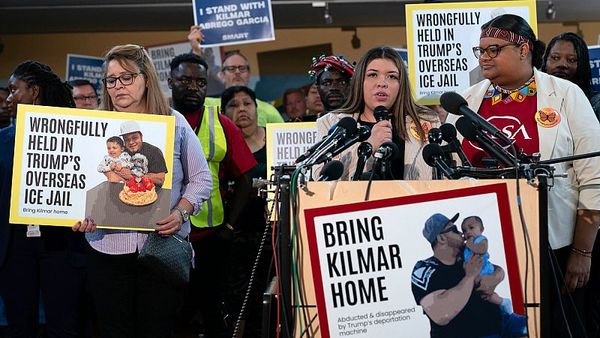There is a bus stop right next to Iqbal Hossain's home in Hoppers Crossing, in Melbourne's outer south-west.
But he rarely uses it.
"Most of the time if anyone needs the bus they have to wait 40 to 50 minutes," he said.
If he does catch the bus four kilometres to the train station, it takes four times longer than if he were to drive — the trip is five minutes by car or 20 minutes on the bus.
"It goes around and around all the little streets before it gets to the station, and then I often miss the connecting train," he said.
He said that is why most people in the outer west avoid the bus system if they need to get somewhere on time.
It's why the commuter car park at the train station is full by 7am most mornings, and only 1.3 per cent of work trips in the west include travel by bus.
Researchers from the University of Melbourne have found it doesn't need to be that way.
How bad is the problem?
John Stone, a senior lecturer in transport planning at the University of Melbourne, said a population the size of Canberra is expected to be added to Melbourne's west in the next 15 years.
The traffic implications of that are obvious to anyone who has sat in a car on the West Gate Freeway, or heard the phrase "heavy on the Point Cook bend" on the traffic report.
"People in the west really need alternatives to driving," Dr Stone said.
"At the moment most people's bus service doesn't operate in the evening, it doesn't operate on Sundays, and even at peak hour might operate on 30- to 40-minute frequencies," he said.
The researchers found the average length of a trip on public transport in Wyndham was 71.4 minutes — almost double the average 37-minute trip in inner Melbourne.
Perhaps it should not come as a surprise then that more than double the proportion of households in Wyndham have three cars than in inner Melbourne — 18.3 per cent of households compared to 8.8 per cent.
That's something common across Melbourne's outer suburbs.
"For many people the cost of having the third, fourth car in the household is prohibitive, so we really do need better public transport," Dr Stone said.
What can be done?
Dr Stone's team wanted to see what would happen if they threw out the current bus system and started again — and they were surprised with the results.
Using computer modelling, they removed the 80 bus networks, which aim to stop within 400 metres of every home, snaking their way through suburban streets.
Instead, the researchers designed a grid-like system, with just 25 routes, operating along major roads, with stops within 800m of most homes.
"For the same resources we could give people huge improvements in accessibility — they could have 10-minute services all day, seven days a week," he said.
The trade-off is that people — like Iqbal Hossain — might have to walk a bit further to get to a bus stop.
At the moment, Public Transport Victoria aims to have a bus stop within 400m of every home.
"But a bus stop without a bus is not much use to you," Dr Stone said.
He said people were happy to walk up to 800m to catch trains, so the extra distance should not put them off.
"But what they'll be walking to is a 10-minute service running direct to the local activity centre or the local station, and they can connect to their communities, connect to jobs much more effectively," he said.
He said the plan includes a demand-driven community bus, for people with problems walking.
"We're thinking of a system that doesn't leave anyone behind," he said.
The computer modelling results show a big increase in the number of people who can catch the bus to where they need to go in 30 minutes.
For Hoppers Crossing, the number of people who could get to the train station within 30 minutes increased by 1155 per cent.
On Sundays, the number of people who could get to Highpoint Shopping Centre shot up by 200 per cent, and for Werribee Plaza it was 400 per cent.
He said the plan would be cost-neutral over time, but would involve additional investment to start with, about $30 to 40 million.
"That cost is really modest, it would involve bringing the west up to the standard of service that's available across Melbourne, in line with population growth," he said.
Back in Hoppers Crossing, Mr Hossain would love to see the plan put in place.
He is a school teacher at a local high school and said students were often running late because they rely on the bus to get to school.
"I believe within a few years' time we need better buses, including electric buses," he said.
The state government has been introducing electric buses to the roads in Melbourne's west — at a pace of about one a month over the next three years.
Earlier this year, Seymour became the first town in regional Victoria to boast an entirely electric fleet.







